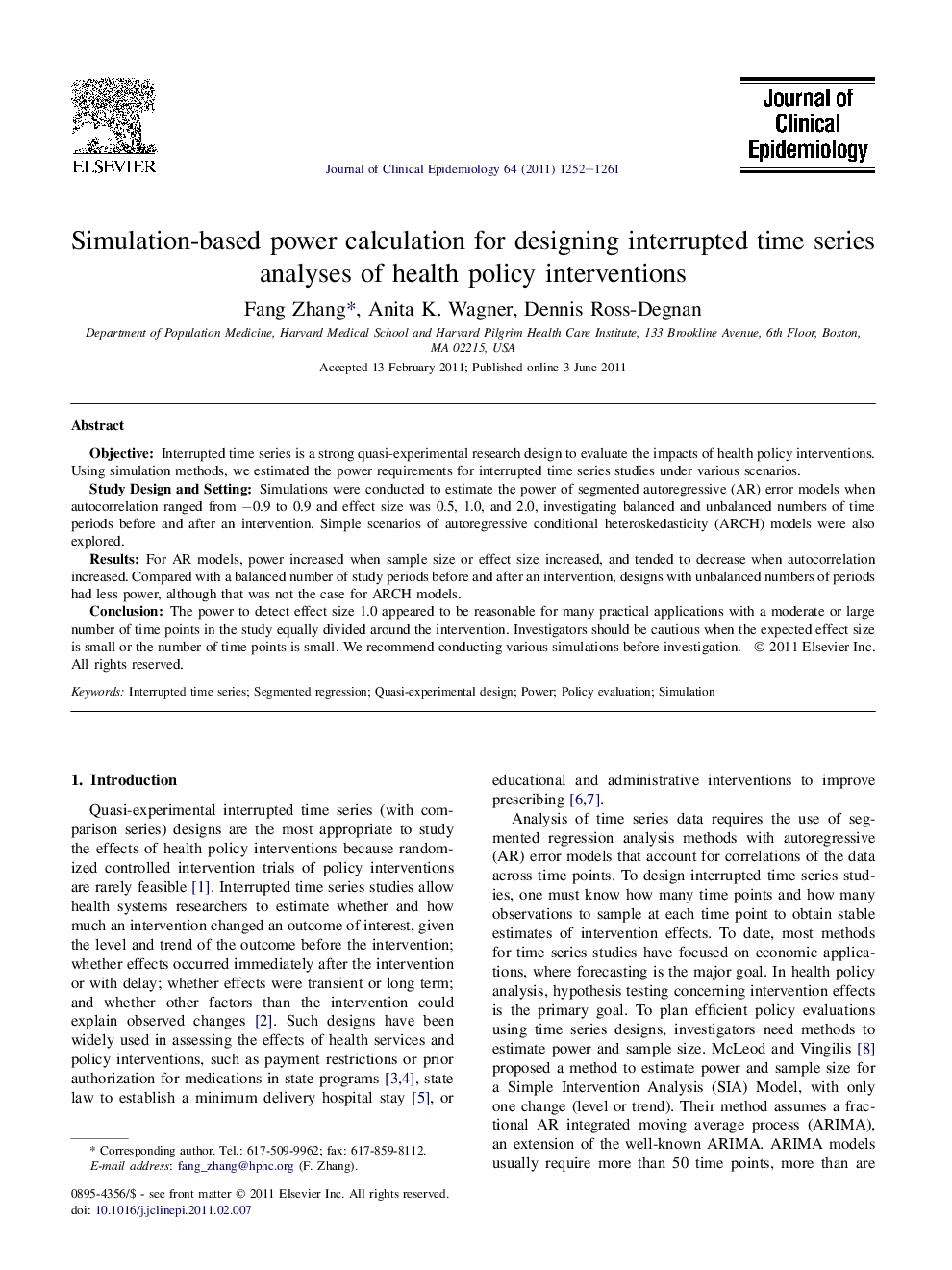| Article ID | Journal | Published Year | Pages | File Type |
|---|---|---|---|---|
| 1082809 | Journal of Clinical Epidemiology | 2011 | 10 Pages |
ObjectiveInterrupted time series is a strong quasi-experimental research design to evaluate the impacts of health policy interventions. Using simulation methods, we estimated the power requirements for interrupted time series studies under various scenarios.Study Design and SettingSimulations were conducted to estimate the power of segmented autoregressive (AR) error models when autocorrelation ranged from −0.9 to 0.9 and effect size was 0.5, 1.0, and 2.0, investigating balanced and unbalanced numbers of time periods before and after an intervention. Simple scenarios of autoregressive conditional heteroskedasticity (ARCH) models were also explored.ResultsFor AR models, power increased when sample size or effect size increased, and tended to decrease when autocorrelation increased. Compared with a balanced number of study periods before and after an intervention, designs with unbalanced numbers of periods had less power, although that was not the case for ARCH models.ConclusionThe power to detect effect size 1.0 appeared to be reasonable for many practical applications with a moderate or large number of time points in the study equally divided around the intervention. Investigators should be cautious when the expected effect size is small or the number of time points is small. We recommend conducting various simulations before investigation.
